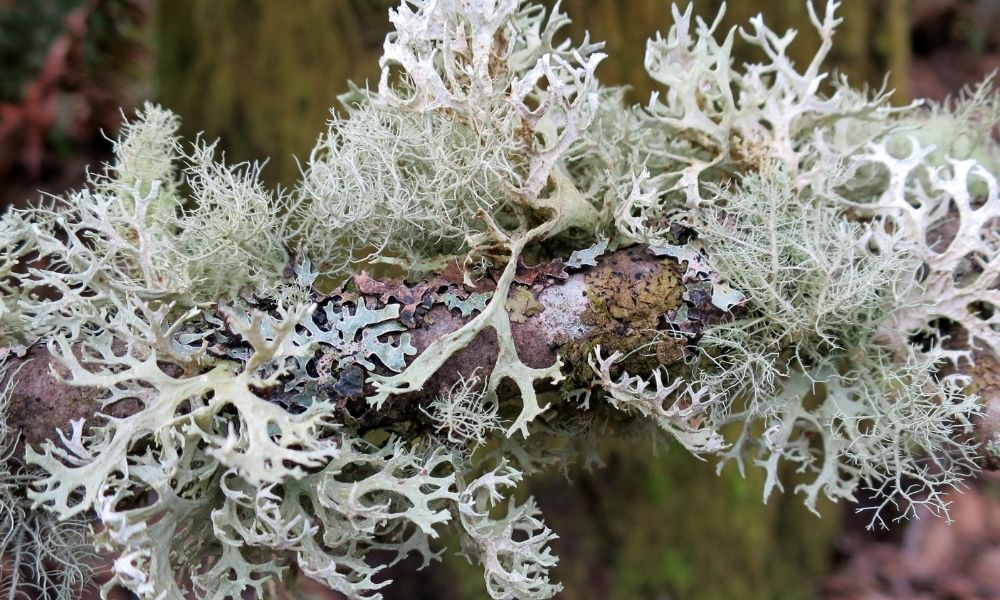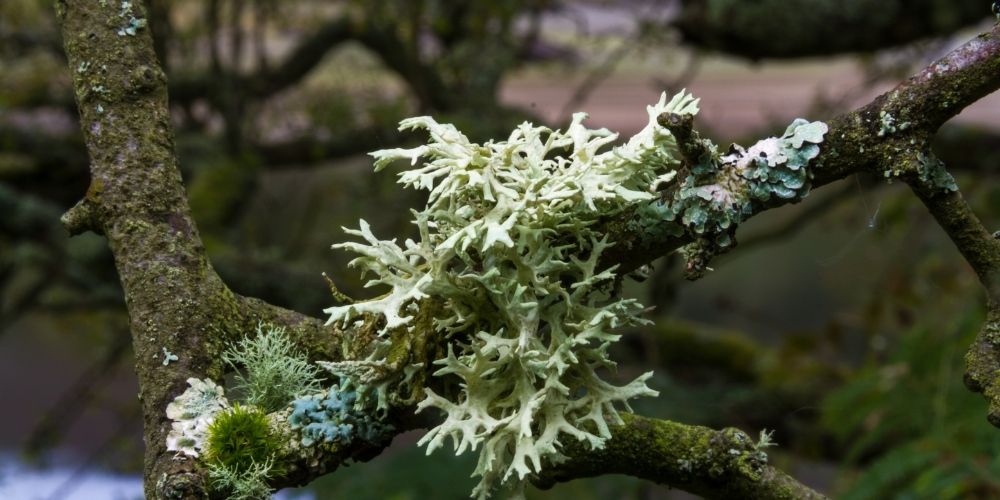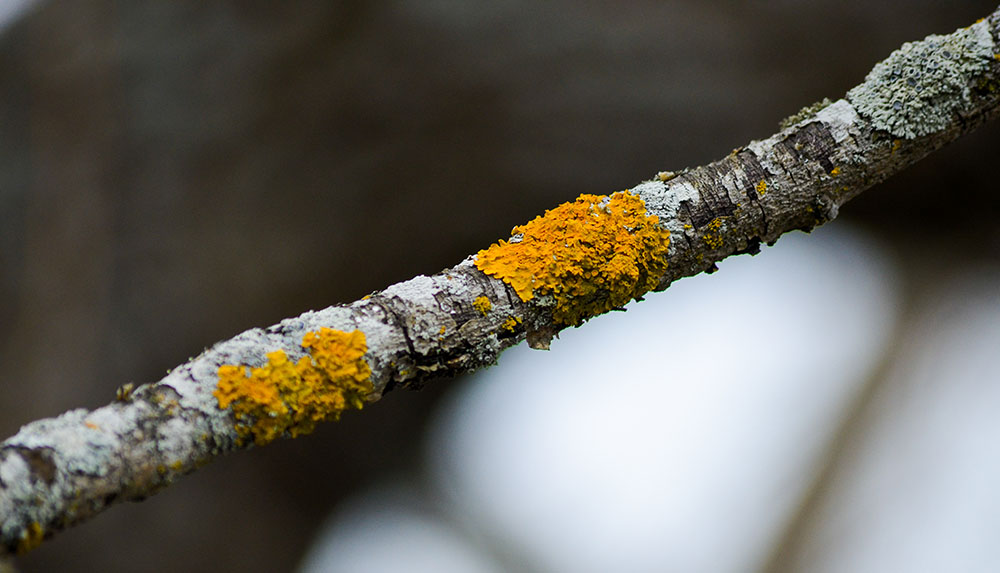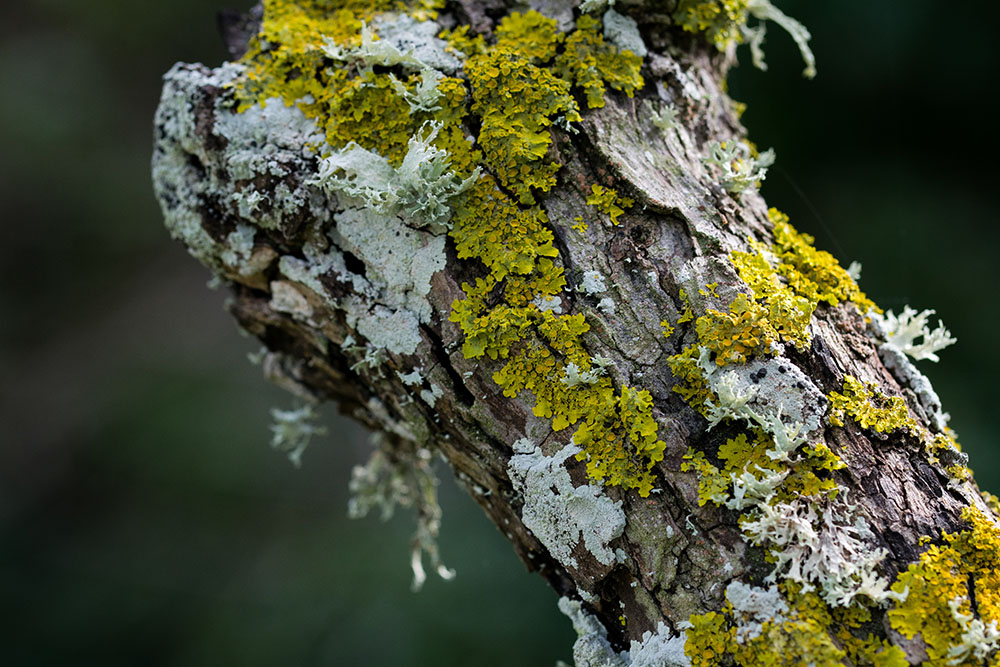
What Should I Do When Spotting Lichen on Trees?
Noticing lichen on trees? Many homeowners tend to ask themselves if it’s good or bad for their trees. That’s why we’ll go over what are the main causes behind this phenomenon, and whether you should be worried about it.
What Is Lichen, and What Causes It to Grow ?

First and foremost, you must know exactly what lichen is.
While most people tend to assume that this organism is a plant or a moss. However, it’s the result of green algae and fungus. And, believe it or not, it’s quite common to find it on many surfaces, including soil, rocks, trees, and shrubs. In fact, lichen can grow from desert sands to frozen areas.
Moreover, you can find different types of lichen all around the world.
Many people tend to associate lichen with dying trees. And, while there is some truth to that, lichen grows on trees when they are already in a declining state. However, there are certain exceptions in which it grows on healthy trees.
The presence of lichen on trees results from the moisture decaying trees provide it. Moreover, the constant exposure to sunlight can make tree trunks the ideal habitat for them to thrive.
Older trees tend to provide a more suitable environment for lichen compared to other trees since it usually counts on fewer branches, allowing sunlight to hit the trunk. Moreover, another key consideration to keep in mind is that old and ill trees often stop exfoliating their bark. As a result, lichen can attach without a problem.
Is Lichen on Trees Harmful?
Just like dark spots on maple leaves, you don’t need to worry about this organism.
Contrary to popular belief, lichen on trees doesn’t pose a threat to them. Since lichen consists mainly of fungi and algae, it has a symbiotic relationship with the tree. In other words, lichen is completely harmless and even beneficial to the tree.
You won’t need to worry about lichen harming your tree as it sustains itself. Put differently, it doesn’t use the tree as its food source since it gets the nutrients it needs from the surrounding air and rain.
Moreover, since this organism isn’t a type of plant, it doesn’t create roots that can make their way through the tree bark. It mainly stays on the surface.
Can Lichen Spread to Other?

As long as the environment is hospitable, most species of lichen can spread to almost any type of surface, including other trees and shrubs. Also, lichen can absorb moisture from any source, including rain, water vapor, dew, and fog.
However, if the area dries out, then lichen will detach from the area, turning into small crumbs. Next, animals or wind carry these crumbs into a new location that’s more suitable for them to thrive.
For this reason, trees generally don’t develop lichen during droughts. Nevertheless, you shouldn’t use this to your advantage by drying out your tree as it can cause permanent damage and even death.
Reasons Why You Shouldn’t Remove Lichen on Trees
Since lichen doesn’t harm trees, there’s no need to get rid of it.
If you decide to remove it, then you run the risk of permanently damaging the tree’s bark. As a result, this damage can act as the perfect entry point for tree-killing insects and multiple diseases for trees.
Additionally, lichen often brings multiple benefits to homeowners, such as improving the air quality around your home by reducing carbon dioxide emissions and transforming it into oxygen. As a result, they lower air pollution.
What Are Some Red Flags to Look Out for in Your Trees?
While lichen tends to be harmless to trees, there are other warning signs you should beware of, especially if you have an old tree in your yard. Whenever you notice any of these signs, be sure to contact a professional tree service company for emergency tree removal. That way, you can be sure that all the proper steps are being taken.
These are the main red flags to look out for:
- Your tree looks as if it’s rotting.
- It seems as if it may fall at any time.
- You start noticing shedding.
- The tree’s trunk has large, vertical cracks.
- You can see insects on your tree, such as carpenter ants and bark beetles.
- Your tree displays signs of fungi at its roots.
It’s also vital for homeowners to know how to distinguish between a sick and a dead tree. That way, if they’re dealing with a diseased tree, they provide the proper sick tree treatment and bring it back to its top shape.
Safe Ways to Deal with Tree Lichen

If you wish for a safe treatment that’ll get rid of lichen on your trees but won’t harm them, there are a few methods you can try out. As a result, you can enhance the appearance of your trees in a safe and effective way.
First, you can try gently scrubbing the tree’s bark using a soapy solution. You shouldn’t have any trouble getting rid of lichen since it’s mainly on its surface. In other words, it should come off without any problem.
The second technique consists of spraying a bit of copper sulfate or lime sulfur onto the lichen. Both of these solutions help kill the fungus found in lichen. As a result, it tends to fall off the tree.
Moreover, be sure to follow these methods between late spring and early fall, as they work best during these seasons. Additionally, make sure only to spray the lichen found on the surfaces of tree trunks and branches. Since these solutions are highly acidic, they can harm your tree’s health if they are sprayed onto the leaves and roots.
Lastly, following the right tree care tips, such as getting your trees properly pruned and mulched, you’ll notice how the presence of lichen starts to decrease.
By knowing these basic facts regarding lichen on trees, you can now better understand their impact on them. Remember to contact us when needing a certified arborist to handle your tree care tasks.



